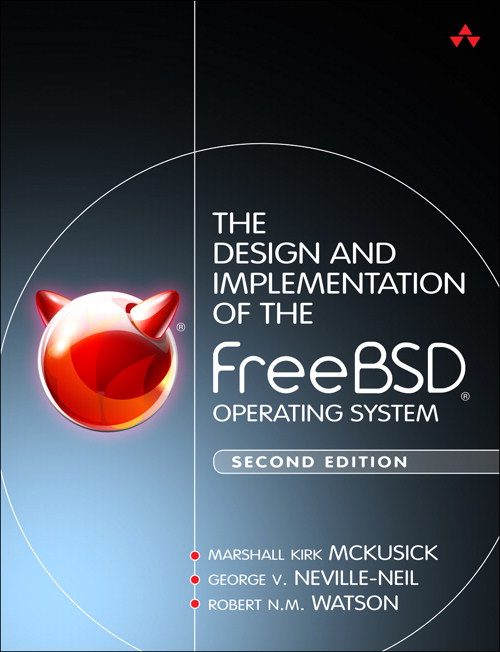
Now available: The Design and Implementation of the FreeBSD Operating System (Second Edition)
[ source navigation ] [ diff markup ] [ identifier search ] [ freetext search ] [ file search ] [ list types ] [ track identifier ]
FreeBSD/Linux Kernel Cross Reference
sys/Documentation/lockup-watchdogs.txt
Version:
- FREEBSD - FREEBSD-13-STABLE - FREEBSD-13-0 - FREEBSD-12-STABLE - FREEBSD-12-0 - FREEBSD-11-STABLE - FREEBSD-11-0 - FREEBSD-10-STABLE - FREEBSD-10-0 - FREEBSD-9-STABLE - FREEBSD-9-0 - FREEBSD-8-STABLE - FREEBSD-8-0 - FREEBSD-7-STABLE - FREEBSD-7-0 - FREEBSD-6-STABLE - FREEBSD-6-0 - FREEBSD-5-STABLE - FREEBSD-5-0 - FREEBSD-4-STABLE - FREEBSD-3-STABLE - FREEBSD22 - l41 - OPENBSD - linux-2.6 - MK84 - PLAN9 - xnu-8792
SearchContext: - none - 3 - 10
SearchContext: - none - 3 - 10
1 =============================================================== 2 Softlockup detector and hardlockup detector (aka nmi_watchdog) 3 =============================================================== 4 5 The Linux kernel can act as a watchdog to detect both soft and hard 6 lockups. 7 8 A 'softlockup' is defined as a bug that causes the kernel to loop in 9 kernel mode for more than 20 seconds (see "Implementation" below for 10 details), without giving other tasks a chance to run. The current 11 stack trace is displayed upon detection and, by default, the system 12 will stay locked up. Alternatively, the kernel can be configured to 13 panic; a sysctl, "kernel.softlockup_panic", a kernel parameter, 14 "softlockup_panic" (see "Documentation/kernel-parameters.txt" for 15 details), and a compile option, "BOOTPARAM_HARDLOCKUP_PANIC", are 16 provided for this. 17 18 A 'hardlockup' is defined as a bug that causes the CPU to loop in 19 kernel mode for more than 10 seconds (see "Implementation" below for 20 details), without letting other interrupts have a chance to run. 21 Similarly to the softlockup case, the current stack trace is displayed 22 upon detection and the system will stay locked up unless the default 23 behavior is changed, which can be done through a compile time knob, 24 "BOOTPARAM_HARDLOCKUP_PANIC", and a kernel parameter, "nmi_watchdog" 25 (see "Documentation/kernel-parameters.txt" for details). 26 27 The panic option can be used in combination with panic_timeout (this 28 timeout is set through the confusingly named "kernel.panic" sysctl), 29 to cause the system to reboot automatically after a specified amount 30 of time. 31 32 === Implementation === 33 34 The soft and hard lockup detectors are built on top of the hrtimer and 35 perf subsystems, respectively. A direct consequence of this is that, 36 in principle, they should work in any architecture where these 37 subsystems are present. 38 39 A periodic hrtimer runs to generate interrupts and kick the watchdog 40 task. An NMI perf event is generated every "watchdog_thresh" 41 (compile-time initialized to 10 and configurable through sysctl of the 42 same name) seconds to check for hardlockups. If any CPU in the system 43 does not receive any hrtimer interrupt during that time the 44 'hardlockup detector' (the handler for the NMI perf event) will 45 generate a kernel warning or call panic, depending on the 46 configuration. 47 48 The watchdog task is a high priority kernel thread that updates a 49 timestamp every time it is scheduled. If that timestamp is not updated 50 for 2*watchdog_thresh seconds (the softlockup threshold) the 51 'softlockup detector' (coded inside the hrtimer callback function) 52 will dump useful debug information to the system log, after which it 53 will call panic if it was instructed to do so or resume execution of 54 other kernel code. 55 56 The period of the hrtimer is 2*watchdog_thresh/5, which means it has 57 two or three chances to generate an interrupt before the hardlockup 58 detector kicks in. 59 60 As explained above, a kernel knob is provided that allows 61 administrators to configure the period of the hrtimer and the perf 62 event. The right value for a particular environment is a trade-off 63 between fast response to lockups and detection overhead.
Cache object: 20401a8ca7c2215e744798cd7e492633
[ source navigation ] [ diff markup ] [ identifier search ] [ freetext search ] [ file search ] [ list types ] [ track identifier ]